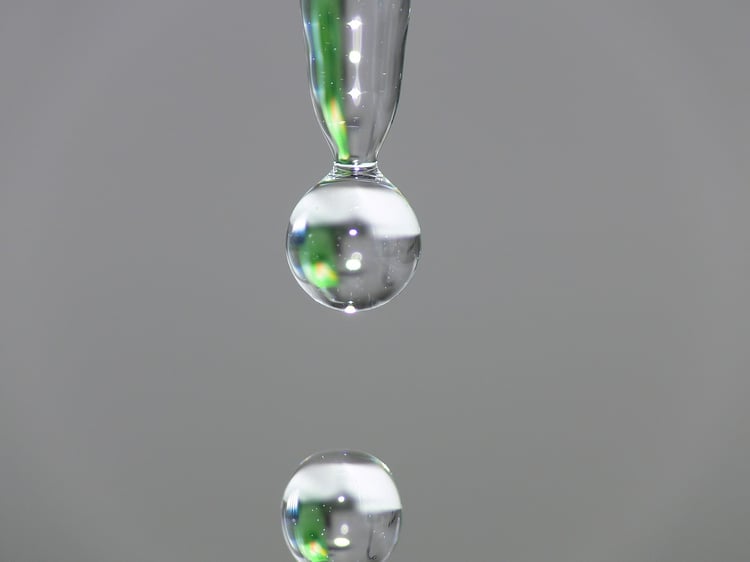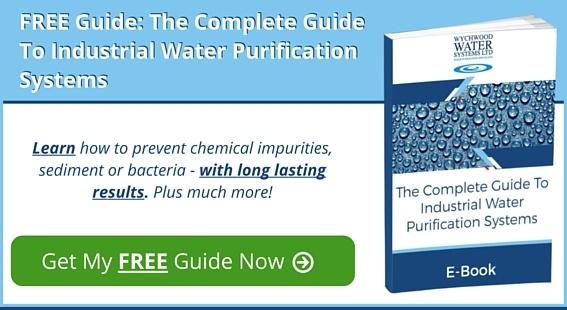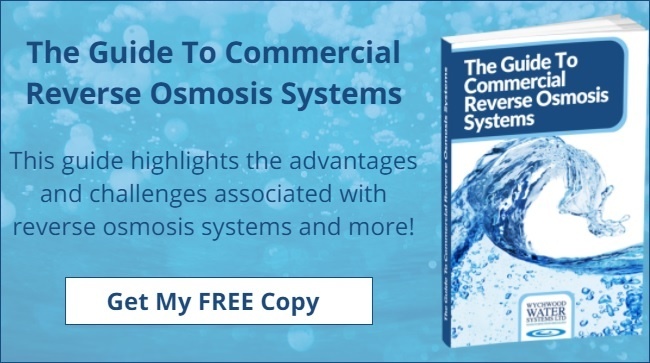
In this article we will explain the common causes of bacteria growth in purified water systems and the effective means of bacteria prevention and removal.
Prevention is much better than the cure
The prevention of bacteria growth in purified water systems, in most cases, is a factor of good system design in the first place. Installation materials used are normally ABS, PVC, Polypropylene, PVDF or 316L stainless steel.
Installation standards are very important. By this we mean that all pipe work joints should be crevice free. Purified water should always be kept moving through a purified water distribution ring main. Flow rates are important as a working velocity of 1.5 to 2.0 meters per second should be achieved through the pipe work.
Dead spaces are a classic cause of bacteria growth. No dead space, causing static water, should be greater than four internal diameters of the pipe work involved. A commonly used and effective method of bacteria prevention is by multiple passing the purified water through an Ultra Violet Steriliser. UV systems are very effective providing they have been installed, sized and operated correctly. In most cases the effective life span of a UV arc lamp used for bacteria kill is 9000 hours.
Heat
Heat is a common cause of bacteria growth. It is often said that 28 Centigrade is the ideal water temperature for bacteria to grow. Whilst this is true, bacteria species such as pseudomonas will start to grow as low as 20 degrees Centigrade. It is good and effective therefore to control the temperature of purified water to < 20 Centigrade, Ideally 18 Centigrade.
A practical method of controlling the temperature of a purified water ring main is to pass the water through a stainless steel heat exchanger. The heat in turn is removed and blown off by an air cooled chiller unit.
Causes of heat are ambient heat pick up from the building the system is installed in. Heat generated by pumps, periods of no water consumption and pipe work installed adjacent to steam, hot water pipes or even boilers.
The effective removal of bacteria with membranes
Membranes, Reverse Osmosis and Ultra Filtration can be used for bacteria removal. Absolute rated sub micron Fouled media’s
By media’s we mean granular activated carbon, filtration sands, catalysts and Ion exchange resins. These media’s are mostly used in the pre treatment stages of purified water systems.
Over the use cycle of the media it is possible for the media to become fouled with organic matter. This in turn can be the cause of bacteria growth. This is often a factor of the user not having the media replaced frequently enough.
Disinfection methods
To maintain the bacteria performance of a purified water system, it is normally chemically disinfected on a regular basis. The disinfectants used mostly fall into the category of oxidisers. Those commonly used are Sodium hypochlorite, Hydrogen peroxide, chlorine dioxide and a blend of peracetic acid and hydrogen peroxide. The method and chemical used will depend on the design of the purified water system involved, and the bacteria problem to be resolved.
Before entering into disinfections, most clients require help and guidance from water treatment specialists. Heat disinfection, (pasteurisation) is a very effective disinfection method. However the purified water system has to have been designed and installed to facilitate this method in the first place.
Effective sampling for bacteria
In most cases the human eye cannot see bacteria. The presence and quantity of bacteria is established by an analysis conducted by a specialist laboratory. Having gone to this trouble and expense, it is very important that the user can believe and act upon the results received from the analysis. This is a factor of effective sampling through a sterile sampling point.
Basically:-
- The sampling point should be of a stainless steel needle valve type.
- The sample point should be flooded with alcohol, (IPA) or even flamed first
- The sample point should be opened and water passed through for 5 minutes to flush.
- The sample should be collected in a sterile container filled right to the top.
- The sample collector should not breathe on the sample.
- The sample should be sealed and refrigerated until the analysis is completed.
Trouble shooting for bacteria problems
In most cases this is a job for a specialist. A full survey of the purified water system should be completed. From this survey an action plan and modifications will follow.
For advice and assistance in the prevention and removal of bacteria in purified water systems please contact Wychwood Water Systems Ltd.










 We are a specialist independent company involved in water purification and water treatment technologies
We are a specialist independent company involved in water purification and water treatment technologies


